- 0 Shopping Cart


Hurricane Katrina Case Study
Hurricane Katrina is tied with Hurricane Harvey (2017) as the costliest hurricane on record. Although not the strongest in recorded history, the hurricane caused an estimated $125 billion worth of damage. The category five hurricane is the joint eight strongest ever recorded, with sustained winds of 175 mph (280 km/h).
The hurricane began as a very low-pressure system over the Atlantic Ocean. The system strengthened, forming a hurricane that moved west, approaching the Florida coast on the evening of the 25th August 2005.
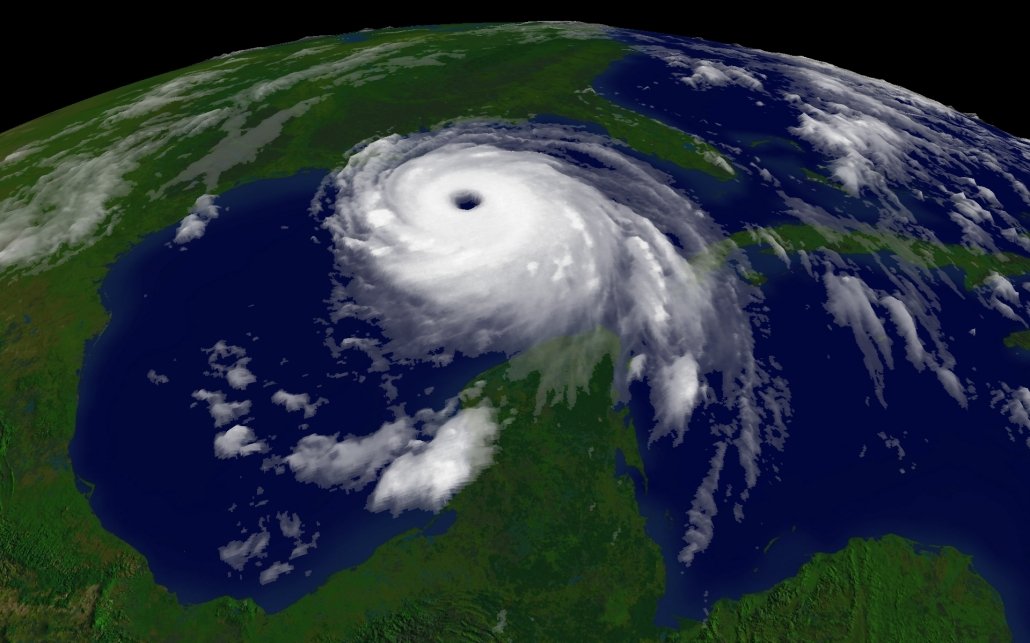
A satellite image of Hurricane Katrina.
Hurricane Katrina was an extremely destructive and deadly Category 5 hurricane. It made landfall on Florida and Louisiana, particularly the city of New Orleans and surrounding areas, in August 2005, causing catastrophic damage from central Florida to eastern Texas. Fatal flaws in flood engineering protection led to a significant loss of life in New Orleans. The levees, designed to cope with category three storm surges, failed to lead to catastrophic flooding and loss of life.
What were the impacts of Hurricane Katrina?
Hurricane Katrina was a category five tropical storm. The hurricane caused storm surges over six metres in height. The city of New Orleans was one of the worst affected areas. This is because it lies below sea level and is protected by levees. The levees protect the city from the Mississippi River and Lake Ponchartrain. However, these were unable to cope with the storm surge, and water flooded the city.
$105 billion was sought by The Bush Administration for repairs and reconstruction in the region. This funding did not include potential interruption of the oil supply, destruction of the Gulf Coast’s highway infrastructure, and exports of commodities such as grain.
Although the state made an evacuation order, many of the poorest people remained in New Orleans because they either wanted to protect their property or could not afford to leave.
The Superdome stadium was set up as a centre for people who could not escape the storm. There was a shortage of food, and the conditions were unhygienic.
Looting occurred throughout the city, and tensions were high as people felt unsafe. 1,200 people drowned in the floods, and 1 million people were made homeless. Oil facilities were damaged, and as a result, the price of petrol rose in the UK and USA.
80% of the city of New Orleans and large neighbouring parishes became flooded, and the floodwaters remained for weeks. Most of the transportation and communication networks servicing New Orleans were damaged or disabled by the flooding, and tens of thousands of people who had not evacuated the city before landfall became stranded with little access to food, shelter or basic necessities.
The storm surge caused substantial beach erosion , in some cases completely devastating coastal areas.
Katrina also produced massive tree loss along the Gulf Coast, particularly in Louisiana’s Pearl River Basin and among bottomland hardwood forests.
The storm caused oil spills from 44 facilities throughout southeastern Louisiana. This resulted in over 7 million US gallons (26,000 m 3 ) of oil being leaked. Some spills were only a few hundred gallons, and most were contained on-site, though some oil entered the ecosystem and residential areas.
Some New Orleans residents are no longer able to get home insurance to cover them from the impact of hurricanes.
What was the response to Hurricane Katrina?
The US Government was heavily criticised for its handling of the disaster. Despite many people being evacuated, it was a very slow process. The poorest and most vulnerable were left behind.
The government provided $50 billion in aid.
During the early stages of the recovery process, the UK government sent food aid.
The National Guard was mobilised to restore law and order in New Orleans.

Premium Resources
Please support internet geography.
If you've found the resources on this page useful please consider making a secure donation via PayPal to support the development of the site. The site is self-funded and your support is really appreciated.
Related Topics
Use the images below to explore related GeoTopics.
Hurricane Florence
Topic home, hurricane michael, share this:.
- Click to share on Twitter (Opens in new window)
- Click to share on Facebook (Opens in new window)
- Click to share on Pinterest (Opens in new window)
- Click to email a link to a friend (Opens in new window)
- Click to share on WhatsApp (Opens in new window)
- Click to print (Opens in new window)
If you've found the resources on this site useful please consider making a secure donation via PayPal to support the development of the site. The site is self-funded and your support is really appreciated.
Search Internet Geography
Top posts and pages.
Latest Blog Entries
Pin It on Pinterest
- Click to share
- Print Friendly
Case Study – Hurricane Katrina
At least 1,500 people were killed and around $300 billion worth of damage was caused when Hurricane Katrina hit the south-eastern part of the USA. Arriving in late August 2005 with winds of up to 127 mph, the storm caused widespread flooding.
Physical impacts of Hurricane Katrina
Flooding Hurricanes can cause the sea level around them to rise, this effect is called a storm surge. This is often the most dangerous characteristic of a hurricane, and causes the most hurricane-related deaths. It is especially dangerous in low-lying areas close to the coast.
There is more about hurricanes in the weather section of the Met Office website https://www.metoffice.gov.uk/research/weather/tropical-cyclones/facts
Hurricane Katrina tracked over the Gulf of Mexico and hit New Orleans, a coastal city with huge areas below sea-level which were protected by defence walls, called levees. The hurricane’s storm surge, combined with huge waves generated by the wind, pushed up water levels around the city.
The levees were overwhelmed by the extra water, with many collapsing completely. This allowed water to flood into New Orleans, and up to 80% of the city was flooded to depths of up to six metres.
Hurricane Katrina also produced a lot of rainfall, which also contributed to the flooding.
In pictures
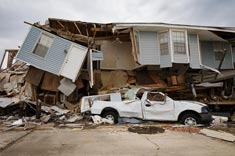
Strong winds The strongest winds during 25-30 August were over the coastal areas of Louisiana and Florida. A map of the maximum wind speeds which were recorded during the Hurricane Katrina episode is shown. Although the winds did not directly kill many people, it did produce a storm surge over the ocean which led to flooding in coastal areas and was responsible for many deaths.
Satellite Image
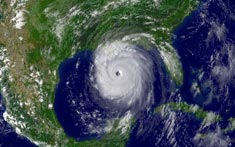
Illustration

Tornadoes Hurricanes can create tornadoes. Thirty-three tornadoes were produced by Hurricane Katrina over a five-day period, although only one person died due to a tornado which affected Georgia.
Impact on humans
- 1,500 deaths in the states of Louisiana, Mississippi and Florida.
- Costs of about $300 billion.
- Thousands of homes and businesses destroyed.
- Criminal gangs roamed the streets, looting homes and businesses and committing other crimes.
- Thousands of jobs lost and millions of dollars in lost tax incomes.
- Agricultural production was damaged by tornadoes and flooding. Cotton and sugar-cane crops were flattened.
- Three million people were left without electricity for over a week.
- Tourism centres were badly affected.
- A significant part of the USA oil refining capacity was disrupted after the storm due to flooded refineries and broken pipelines, and several oil rigs in the Gulf were damaged.
- Major highways were disrupted and some major road bridges were destroyed.
- Many people have moved to live in other parts of the USA and many may never return to their original homes.
The broken levees were repaired by engineers and the flood water in the streets of New Orleans took several months to drain away. The broken levees and consequent flooding were largely responsible for most of the deaths in New Orleans. One of the first challenges in the aftermath of the flooding was to repair the broken levees. Vast quantities of materials, such as sandbags, were airlifted in by the army and air force and the levees were eventually repaired and strengthened.
Although the USA is one of the wealthiest developed countries in the world, it highlighted that when a disaster is large enough, even very developed countries struggle to cope.
Weather Map
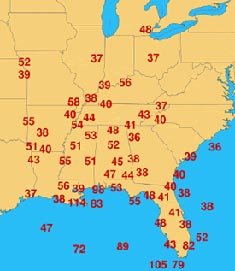
Web page reproduced with the kind permission of the Met Office

Start exploring
- Search Resources
- All Levels Primary Secondary Geography Secondary Maths Secondary Science
- Choose a topic All Topics Air Masses Anticyclones Carbon Cycle Climate Climate Change Climate Zones Clouds Contour Coriolis Depressions El Nino Extreme Weather Flooding Front Global Atmospheric Circulation Hydrological Cycle Microclimates Past Climate Snow Synoptic Charts Tropical Cyclones Urban Heat Island Water Cycle Weather Weather Forecast Weather Map Weather System
- All Climate Change Adaptation Afforestation Agriculture air quality aircraft Albedo Anthropocene anthropogenic Arctic/ Antarctic Carbon cycle Carbon dioxide removal/ sequestration Carbon footprint Carbon sinks Causes Climate Climate Crisis/ Emergency Climate justice Climate literacy climate stripes/ visualisation Climate zone shift clouds CO2/ carbon dioxide emissions COP Cryosphere Deforestation Desertification Ecosystems Electric vehicles Energy Equity Evidence Extreme weather Feedback loops Fire weather Flood defences Flooding/ flood risk Fossil fuels Fuel security Global energy budget/ balance Green climate fund Greenhouse effect Greenhouse gas concentrations Heatwaves/ extreme heat Hydroelectric power Ice sheets Impacts IPCC Keeling curve Mitigation Modelling Natural variability Nature based solutions Negotiations Net zero Nuclear power Observations Ocean acidification Ocean warming Proxy records Regional climate change Renewable/ non fossil fuel energy Scenarios Schools Strike for Climate Society Solar energy Solutions Storms Temperature/ global warming Tipping points Transport Tropical cyclones Uneven impacts UNFCCC/ governance Urban green infrastructure Urban heat Urbanisation Water cycle Water security Water vapour (H2O) concentrations Weather Wild fires Wind power
- Choose an age range All ages Primary 0 to 7 7 to 11 Secondary 11 to 14 14 to 16 16 to 18
Latest from blog
5 common climate misconceptions, weather and climate: updated teachers’ cpd, new maths lesson with climate context, quality control of climate education resoures, related resources ….
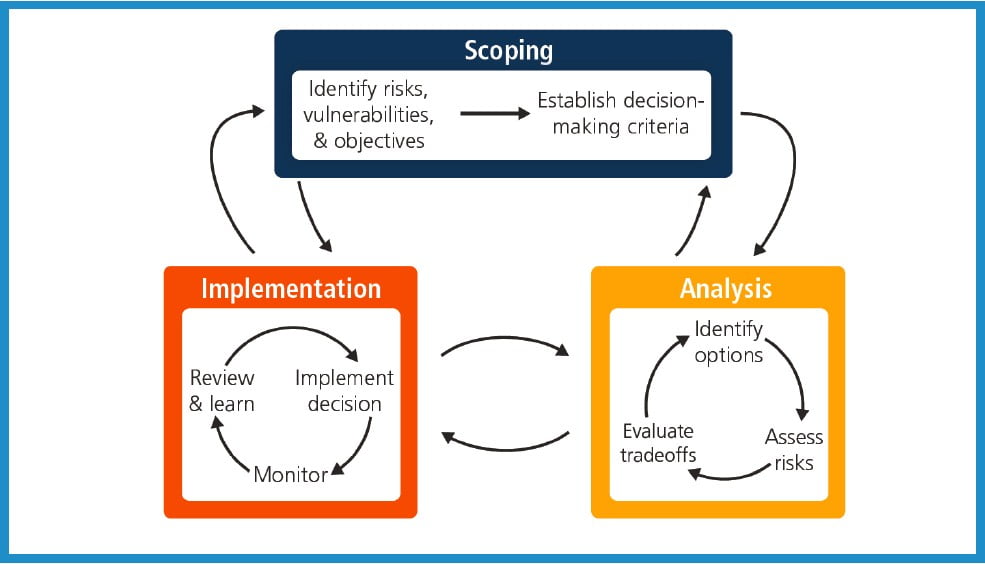
Adaptation Strategies

Is our Weather Becoming More Extreme?

2016 AQA A Level Geography
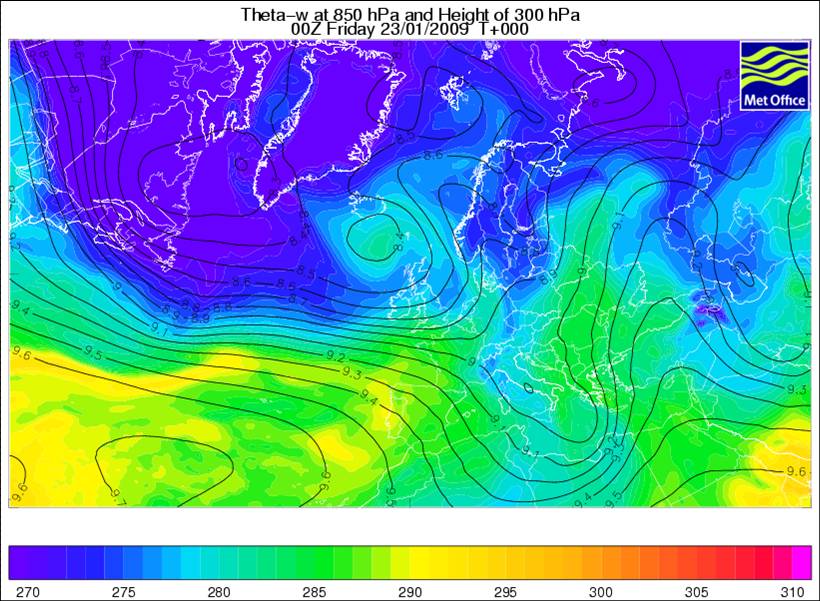
Weather Systems Video
Subscribe to metlink updates, weather and climate resources and events for teachers.
© 2024 Royal Meteorological Society RMetS is a registered charity No. 208222
About MetLink Cookies Policy Privacy Policy

- We use cookies on this site to enhance your user experienceBy clicking any link on this page you are giving your consent for us to set cookies. More info
- Strictly Necessary Cookies
By clicking any link on this page you are giving your consent for us to set cookies. More info
Strictly Necessary Cookie should be enabled at all times so that we can save your preferences for cookie settings.
If you disable this cookie, we will not be able to save your preferences. This means that every time you visit this website you will need to enable or disable cookies again.

Hurricane Katrina: Responding to an "Ultra-Catastrophe" in New Orleans (B)
- Building Partnerships
- Marketing and Communication
- Environment, Energy, and Agriculture
- Strategic Planning
- National and International Security
- Crisis Management
- Government - State And Local
- Government - Federal
Educator Access
A review copy of this case is available free of charge to educators and trainers. Please create an account or sign in to gain access to this material.
Permission to Reprint
Each purchase of this product entitles the buyer to one digital file and use. If you intend to distribute, teach, or share this item, you must purchase permission for each individual who will be given access. Learn more about purchasing permission to reprint .
Abstract: When Hurricane Katrina slammed into the Gulf Coast on Monday morning, August 29, it cut a wide swath of destruction in the area; but despite inflicting enormous damage, it initially appeared that the storm had spared low-lying New Orleans the worst of its wrath. But as Katrina moved on, it soon became clear to those who had not evacuated the city that something was going very wrong: almost every part of New Orleans began to flood, and by the next day roughly 80 percent of it would be under water. The rapidly rising floodwaters, the result of three major breaches in the levees protecting the city, created a massive humanitarian crisis. Tens of thousands of residents escaped to rooftops or attics, where they waited anxiously for rescue, or waded in waist-deep water to find shelter; many went to the Superdome, which was already packed with people who had waited out the storm there, or to other improvised shelters in the city. As the days dragged on, it would become increasingly apparent that almost every aspect of the response from state, local, and federal government was falling far short of what was needed: evacuees languished in squalid shelters or on highway overpasses waiting for buses that did not come; looting and more serious crimes were reported to be rampant; food, water, and medical care were in short supply. As public outrage grew, fed by TV footage of distraught storm victims, emergency response officials and political leaders, all the way up to President George W. Bush, found themselves scrambling to cope with the "ultra-catastrophe" that Katrina had visited on New Orleans. Learning Objective: The case provides an opportunity to consider the operational issues of emergency response, particularly the problems of interagency, interjurisdictional, and intergovernmental coordination in an environment where infrastructure and communications systems had been almost entirely destroyed. Used in tandem with Part A, the case provides a before-and-after look at the response to Katrina, but it can also be taught as a freestanding case.
Other Details
Related cases.

Hurricane Katrina: Responding to an "Ultra-Catastrophe" in New Orleans (Abridged) (C)

Hurricane Katrina: Preparing for "The Big One" in New Orleans (A)

"Broadmoor Lives": A New Orleans Neighborhood's Battle To Recover from Hurricane Katrina (A)

Hurricane Katrina: Preparing for The Big One in New Orleans (Abridged) (A)
- International
- Education Jobs
- Schools directory
- Resources Education Jobs Schools directory News Search

Impact of tropical cyclones/hurricanes - Katrina case study
Subject: Geography
Age range: 14-16
Resource type: Lesson (complete)
Last updated
30 March 2021
- Share through email
- Share through twitter
- Share through linkedin
- Share through facebook
- Share through pinterest
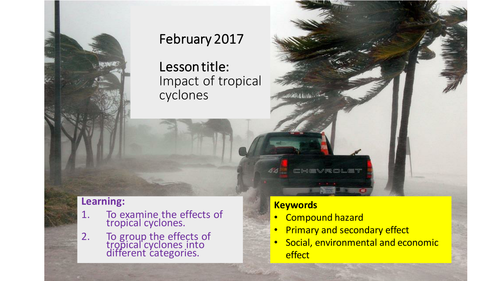
Tes paid licence How can I reuse this?
Get this resource as part of a bundle and save up to 34%
A bundle is a package of resources grouped together to teach a particular topic, or a series of lessons, in one place.
Hurricane - formation, impact and management
This is one of the most active and destructive hurricane season in the Atlantic Ocean area on records. Thousands of people (including British nationals) have been affected by hurricanes this hurricane season. There is never a better opportunity to teach about hurricanes whether or not it's on your LS for T1. Here we have three (3) lessons that explore the science behind hurricane formation, an analysis of the social and economic impact of hurricanes and finally a look at ways hurricanes can be managed to minimise the loss of lives. All the resources to deliver the lessons are included with the lessons. Just download and teach.
Your rating is required to reflect your happiness.
It's good to leave some feedback.
Something went wrong, please try again later.
This resource hasn't been reviewed yet
To ensure quality for our reviews, only customers who have purchased this resource can review it
Report this resource to let us know if it violates our terms and conditions. Our customer service team will review your report and will be in touch.
Not quite what you were looking for? Search by keyword to find the right resource:

- Katrina Meteorology and Forecasting
- Katrina Impacts

IMAGES
VIDEO
COMMENTS
This work by PMT Education is licensed under CC BY-NC-ND 4.0. ... After Hurricane Katrina, man-made leveesfailedand flooded 80% of the city of New Orleans, and 1,577 died inthestateofLouisiana ... Case Study Notes - Cyclones in The USA and Bangladesh - Edexcel Geography GCSE Author: PMT Education
Katrina was one of the most intense Atlantic Basin hurricanes on record. By 29 August, some power was lost and it hit the coastline as a Category 4 event with sustained wind speeds of 145 mph (235 kph) plus stronger gusts. At 6.10 am on 29 August Katrina's second landfall was at Buras-Triumph, Louisiana.
When the storm strengthens and winds reach 39-73 mph (63-117 km/h), the system is known as a tropical storm. and is given a name from the official list for that year. The tropical storm becomes a hurricane when wind speeds are greater than 74 mph (119 km/h). At this stage, the storm may show the characteristic cloud-free 'eye' (Figure 1).
Hurricane Katrina was an extremely destructive and deadly Category 5 hurricane. It made landfall on Florida and Louisiana, particularly the city of New Orleans and surrounding areas, in August 2005, causing catastrophic damage from central Florida to eastern Texas. Fatal flaws in flood engineering protection led to a significant loss of life in ...
case study. Particularly, hurricane Katrina was one of the most devastating hurricanes faced by the US in the last century and is the costliest one ever to be recorded. Katrina made landfall along the Central Gulf Coast in Louisiana on Aug 29, 2005, as a Category-3 hurricane with a windspeed of 125 MPH. It resulted in a storm
Hurricane Katrina case study for Advanced level. Hurricane Katrina . Hurricane Katrina is the costliest natural disaster in the history of the United States. Among recorded Atlantic hurricanes, it was the sixth strongest overall but what made it deadly was where it hit and the physical and human geography of that region. . At least 1,836 people ...
Katrina underwent to periods of rapid intensification, between August 26 and 28. On August 27th, Katrina became a Category 3 hurricane with 185 km/hr (115 mph) winds and had a well formed eye on satellite imagery. Throughout August 27 Katrina nearly doubled in size and by the end of the day, tropical storm force winds extended about 260 km (160 ...
Hurricane Katrina was the largest natural disaster in the United States in living memory, affecting 92,000 square miles and destroying much of a major city. Over 1,800 people died and tens of thousands were left homeless and without basic supplies. Katrina evolved into a series of connected crises, with two basic causes.
C3.4 Case study of Hurricane Katrina C3.4.1 Hurricane Katrina and coastal ecosystem services in the Mississippi delta (Chapter 6, Box 6.4 ) Whereas an individual hurricane event cannot be attributed to climate change, it can serve to illustrate the consequences for ecosystem services if the intensity and/or frequency of such events were to ...
Katrina is the third deadliest hurricane in U.S. history. In New Orleans, people were trapped in their houses and on their roofs as the rapidly rising water caught many people by surprise. The flooding and widespread damage from Katrina delayed rescue and aid efforts for days. Besides the death toll, hurricane Katrina left many people homeless ...
Case Study - Hurricane Katrina. At least 1,500 people were killed and around $300 billion worth of damage was caused when Hurricane Katrina hit the south-eastern part of the USA. Arriving in late August 2005 with winds of up to 127 mph, the storm caused widespread flooding. Physical impacts of Hurricane Katrina. Aftermath.
Hurricane Case Studies. The hurricane case studies are in-depth looks at storms that made significant impacts on the United States. Different regions of the coast threatened by hurricanes will be represented by the signature storm from that region. This section begins with Hurricane Katrina and will grow over time. Katrina is the costliest ...
When Hurricane Katrina slammed into the Gulf Coast on Monday morning, August 29, it cut a wide swath of destruction in the area; but despite inflicting enormous damage, it initially appeared that the storm had spared low-lying New Orleans the worst of its wrath. But as Katrina moved on, it soon became clear to those who had not evacuated the ...
Case studies all in one Here I have put all the case studies figures into one document because over the two separate notes that I've made for human and physical factors on tectonic hazard I used the same case studies but using different figures. In the exam you can use the same case study more than once as
Hurricane Katrina 9 Marker. For GCSE Geography 9-1 AQA Spec. A way to practice 9 marker exam skills whilst also learning about the Katrina Case Study in the Hazards unit. Students use the immediate/long term sheet to complete the A3 planning sheet, which hinges off' the 9 mark question. The planning sheet requires students to pick the ...
1200. How much aid was given by the government? 50 billion USD. Was the nature guard commissioned to restore order? Yes. GCSE Hurricane Katrina case study for geography - Edexcel B Learn with flashcards, games, and more — for free.
Examining Hurricane Katrina as a Case Study. On August 29, 2005, Hurricane Katrina began a chain of events that would devastate and flood a city, breach protective levees, claim thousands of lives across the Gulf Coast, force over 100,000 people into an exile from which they have yet to return and severely tax the resources of New Orleans, the state of Louisiana, and the federal government.
This is a GCSE lesson on effects of tropical cyclones using hurricane Katrina as a case study. Key facts about the lesson are: 1. The lesson first introduce students to some of the effects of hurricanes/cyclones/typhoons. Then it defines these effects as primary and secondary effects. There is a really good task for students to develop their ...
Hurricane Katrina Case Study. Hurricane Katrina was a powerful and deadly storm. Katrina is the costliest storm and the third deadliest storm in U.S. history. Based on the size of the area impacted and the number of people affected, Katrina was one of the largest natural disasters in the history of the United States.
Hurricane Katrina Case Study. Term. 1 / 23. Why can tropical storms form near Louisiana and Mississippi? Click the card to flip 👆. Definition. 1 / 23. Sea temperatures are 27 degrees or warmer in the Gulf of Mexico. Click the card to flip 👆.
CAIE Geography Pre-U. 3A: Meteorological Hazards. Case Studies. www.pmt.education. Moore, Oklahoma 2013 Tornado. Cause Two days of storms turned into several supercell thunderstorms. One of these thunderstorms which contained strong updrafts of winds soon turned into a tornado. Consequences and impacts Killed 24 people and 120 people needed ...
Typhoon Haiyan was a category 5 super typhoon. that hit areas of Southeast Asia 2013, particularly affecting the Philippines. in November The typhoon was one of the. devastating tropical storms on record. Typhoon Haiyan began as a tropical depression. hundreds of kilometres east of the Philippines on the 2nd of November, and travelled westward ...
North American hurricane season. The very fact that Sandy begins with the letter S, so far down the alphabet, shows just how eventful the 2012 season had been. Hurricane Sandy was quickly referred to in the press as a 'superstorm', due to its strength, speed and extent both northwards and inland in North America. It hit wealthier and poorer